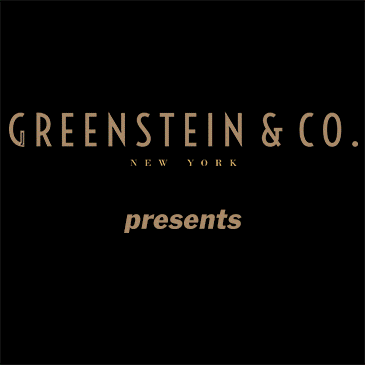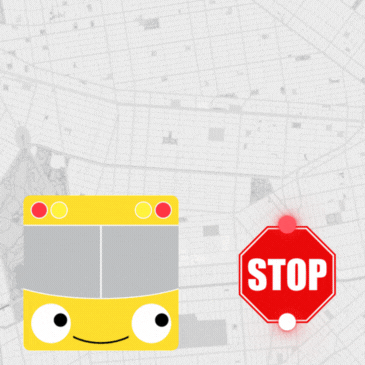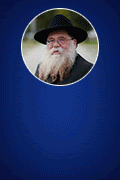
Taking the Jump Holding the Rebbe’s Hand
A collection of stories and highlights from a Farbrengen with Rabbi YY Bukiet in honor of the 75th Hillulah of the Frierdiker Rebbe and the beginning of the Nesius of the Rebbe. The Farbrengen took place at Bais Levy Yitzchak, in Pomona NY. Transcribed by Bentzion Elisha.
The Rebbe is Holding My Hand
Having left the world of Chabad in the 1920s she then made Aliyah to join a Kibbutz in Israel. Now, decades later, surrounded by people unfamiliar with the Lubavitch she came from, she had nobody around her to share this with who could understand. So, she wrote to her sister-in-law in Montreal who she knew would get it.
She had passed out and was rushed to the hospital. After thorough analysis they advised her to get surgery. Being that was very elderly at the time, 95 years old, she was inclined to forgo the procedure despite her family begging her, she refused.
‘I’m so old now, whatever will be will be.’ She said, not wanting to subject herself to being cut open and going through a lengthy recovery.
The second time she collapsed and was taken to the hospital, again the doctors pressured her to get the surgery that could help her. Afraid, she declined.
In the hospital bed she dozed off for a couple of hours and had a vivid dream. This dream was not some fantastical imagining but rather a replayed memory from her childhood.
It was one Shabbos, and her father, Reb Chonye Morosow, the famed Mazkir of the Frierdiker Rebbe, was Davening at length. The whole week he worked tirelessly, immersing himself in the Rebbe’s missions with Mesiras Nefesh, and now, Shabbos, he could indulge himself and Daven properly. Their mother had him take the kids with him to Shul and they were playing in the shul after the Minyan finished. At some point the kids set up the tables and would run and jump. Soon it turned quite competitive with the boys taunting the girls.
The Frierdiker Rebbe, who happened to live nearby, walked in, drawn by the noise, just when it was my turn and the Rebbe witnessed how the boys were laughing at me that I couldn’t do it.
He saw how I was scared and ashamed.
The Rebbe came over to me.
‘If I hold your hand, will you take the jump?’ He asked.
‘Yes.’ I replied.
The Rebbe held my hand and I jumped over to the next table.
When I woke up from my dream I realized this dream was a personal message to me from the Frierdiker Rebbe.
He is holding my hand, still, now…
I decided to ‘jump’ and go through with the operation.
Thankfully, it went well and she lived another ten years before dying at the ripe old age of 105!
Little Big Acts
The Rebbe’s upcoming 75th birthday was upcoming, so we decided to give him a gift.
It was 1976/7 and I was teaching in Miami Beach at the time in the Lubavitcher Yeshivah which coincidentally had mostly non Lubavitcher students, nevertheless, we decided at a Farbrenegn that we were going to give the Rebbe a collective joint gift, together.
We started on the auspicious day of 14 Kislev, the Rebbe and the Rebbetzin’s anniversary.
My idea was that as a personal gift to the Rebbe, we were going to learn an extra 75 minutes a week and give 75 cents to Tzedakah as well.
Practically this meant we were going to learn an extra 15 minutes a day for 5 days a week until the Rebbe’s birthday on the 11th of Nissan.
In addition, we would also give 15 cents a day amounting to 75 cents.
Even though this was a small change in schedule, initially it created some waves amongst the families of the students.
They would now pick up at 5:15 instead of 5…
We did it anyway, and it worked out well.
A few days later, I wrote about it to the Rebbe. Honestly, I was not expecting any response.
I wrote the Rebbe many times, and not every time I wrote the Rebbe was I rewarded with an answer.
Regardless, I wanted to inform the Rebbe of our class’s little symbolic efforts.
I was taken aback, but pleasantly surprised, when the Rebbe did send me a handwritten letter a few days later on Chanukah in which he wrote:
“Tac”h Tac”h Al Habsora Tova.” “Cheers and gratitude for the good news!”
Before the Rebbe signed, he added, ‘U’Libsurus Tovos,’ ‘To continued good news!’
It was such a shock that such a nothing, tiny thing, our miniscule gift of minutes of learning and giving a few cents of charity would not only garner a response, but such a warm letter of appreciation.
With this episode, the Rebbe taught me a lesson: even a seemingly small insignificant act is actually very big and significant.
You don’t have to turn over worlds and create mountainous things to make an impact. Even ‘small steps’ and harnessing ‘mundane moments’ are priceless.
Hilula Farbrengen Sends a PA”N
Even as a child I could feel the importance and precision the Rebbe accorded this particular Farbrengen. It was 5723,1963, on the 24th of Teves, which fell that year on a Motzei Shabbos.
To mark and celebrate the momentous occasion of the 150th anniversary of the Alter Rebbe’s Histalkos, the Rebbe called for a Farbrengen at precisely 10:25pm. That year’s timing was similar to the year he passed away, on a Motzei Shabbos, the 24th of Teves.
This time was selected to coincide with the known time of the departure of the Alter Rebbe’s soul at 10:30pm (shared by the Tzemach Tzedek).
The Rebbe then started the Farbrengen by saying how participating in a Farbrengen, and saying a Torah of the Baal Hillulah, commemorating him, sends a collective PA”N to that Rebbe from all the participants.
I remember how the Rebbe came at 10:25 and how palpable it was that we were sending a PA”N to Alter Rebbe, as we gathered to the minute of his passing in his honor.
That night initiated a year long call by the Rebbe for Chasidim to add in physical and spiritual Tzedaka and strive to achieve multiple accomplishments in honor of this very special Shnas Hakan. Especially as it relates to the number 150…
Affect Everything
One day I was delayed in 770 en-route to Manhattan for some personal matters when word got out the Rebbe will be Farbrenging.
It was quite unusual.
It was around 1pm in the middle of the day.
Apparently the Farbrengen was in honor of three guests that performed some special Shlichus for the Rebbe: Rabbi Moshe Feller, Rabbi Shlomo Cunin and Rabbi Yitzchok Dovid Groner.
It was an unusually small crowd that were present at this unannounced surprise Farbrengen.
This day of the 19th of Tammuz, 5728, 1968 marked the 75th anniversary of the last day of ‘Shivas Yemei Hamishte,’ the weeklong celebrations held in honor of the Frierdiker Rebbe’s Bar Mitzvah. On that last day of celebration, the Rebbe Rashab said the famous Maamar, ‘Vechazakta Vehayisa Leish,’ which completed his string of Maamarim illuminating the Bar Mitzvah. (In this Farbrengen the Rebbe said his famous Maamer based on the Rebbe Rashab’s. The Maamer was edited 21 years later by the Rebbe and the printed.)
The Rebbe then explained the significance of the number 75 by referencing a passage of Torah Ohr.
‘Avram was five years and seventy years when he left Charan,’ (Lech Lecha 12, 4).
This alludes to the influence of the intellect, represented by Avram (Av Ram, supernal intellect) on one’s emotional attributes.
The state of disconnect between one’s intellect and emotions is called ‘Charan.’
When he reached the age of 75, he was able to truly align his intellect with his emotions and heart and master them.
Bringing the highest levels, intellect, to the lowest levels, the emotions and heart.
This was accomplished by reaching ‘75’.
‘Seventy years’ – represent attaining emotional perfection as each one of the seven Midos, emotional attributes, comprises 10, the complete refinement of them is represented by ’70.’
However, this ‘70’ still only represents a certain externality of one’s emotional states.
‘Five years’- represent the five attributes of Chesed, kindness, through which there is a more intimate and inner influence over one’s Midos, emotional traits and inner landscape.
After elaborating on these ideas, the Rebbe then presented this concept of ‘75’ as a great opportunity and a call for action.
He said that when 75 years have elapsed from that time we are commemorating, the last day of celebration of the Frierdiker Rebbe’s Bar Mitzvah, it is a turning point.
Now, there is an added boost of strength that is bequeathed from above to empower us to draw down lights and affect all matters with happiness through our everyday actions.
‘Sheyuchlu Liful Kol Hayinyanim, Veyumshechu Kol hahamshacos Milmala Mala Ad Ein Ketz Ad Lemata mata Ad Ein Tachlis’
‘They will now be able to actualize the potential entirely, and draw down all the lights, from one high realm to even higher realms without end (the infinite levels above), down to realms that are the lowest of the low without end (the infinite levels down below).’
Is The Rebbe Alive Within Me?
The last Shabbos my father was home before being taken to the hospital and later passing a few weeks later was Shabbos Parshas Vayigash.
By the kiddush we had in the house after davening he shared then his last insightful interpretation on the Parsha.
Regarding the famous verse: ‘Ani Yosef, Ha’od Avi Chai?’ ‘I am Yosef, Is my father still alive?’
When Yosef asked his brothers, ‘is my father still alive’, he meant to ask them, is my father still alive within me. Is it recognizable that he is connected to their father, Yaakov. Are they able to see ‘their father,’ all that he stands for in him.
Likewise, Yaakov also proclaimed upon hearing his son is still alive:
‘‘Od Yosef Bni Chai,’ ‘my son Yosef still lives?’
His statement that ‘Yosef is still alive’ as his father’s son, holding on to what his father taught him.
This relates also to every Chosid. Is it recognizable that ‘Od Avi Chai,’ that Rebbe still is alive within me. Is it recognizable and does my life truly show that I am my Rebbe’s Chosid?
**
In addition to this, there is one more ‘last teaching’ I heard from him before he passed.
On the deathbed of Rabbi Yochanon ben Zackai it says in Gemara (Brachos 28 :2) that when his students came to visit him, he cried.
‘Why are you crying?’ they asked him. ‘I don’t know where they are taking me.’ He answered, insinuating he doesn’t know whether he is going to Gan Eden or not.
My father pointed out an interesting detail.
The Gemara describes how he cried specifically when his students were present. Why then and not when he was alone? Or with his family?
This point teaches us something important.
Rabbi Yochanan ben Zakai knew very well where he was going.
He wasn’t worried for himself.
He cried in front of his Talmidim since he didn’t know where his Talmidim were going to take him.
A Talmid represents his teacher.
If the Talmid isn’t behaving as he should or on the level that he can be, this reflects badly on his teacher.
Likewise, as Chasidim, we Shlep the Rebbe wherever we go and to whatever we do.
Where are we taking the Rebbe?
If someone sees a Lubavitcher doing something not so right they don’t say, this particular individual did that, they look at him as a representative of the Rebbe, of Lubvitch.
This is the Rebbe’s Chasid. This is Lubavitch…
What ‘we do’ matters, where ‘we go’ matters.
As Chasidim we must remember that we always ‘take the Rebbe with us,’ therefore we must be extremely careful.
Beyond the Seder
It was quite late on the 2nd night of Pesach after our Seder.
My father and I walked to 770 to join the Rebbe for the whatever part of the Seder the Rebbe was up to and the Farbrengen afterwards, around 1:30am.
This was in the early 1960s.
There were scores of people that came to those crowded Sedarim, nevertheless the Rebbe once lamented that at the times of the Frierdiker Rebbe they ‘shut the doors’ and Bochurim would push their way in, whereas now, ‘the doors are wide open’ and barely anybody comes.
It was not easy to stay up by that Farbrengen on that 2nd night.
The late hours after the Seder, the 4 cups of wine and the Matzah take their toll.
People were tired and after the Afikoman they couldn’t even eat or drink anything more.
I remember looking around those nights and seeing many sleeping Chasidim.
Nevertheless, it was very exciting to come and be by the Rebbe and I was lucky enough that my father took me there for several years.
One year, on this night we arrived a little later than usual. Walking down Kingston between Union and Eastern Parkway, all the sudden my father jolts in a panic as he sees the Rebbe turn the corner with his mother Rebbetzin Chana to her home on President St.
To give the Rebbe space and privacy on their private time after Seder walk, my father ran to the nearest building’s hallway, so as to not infringe on their time together.
Seeing my father, I naturally followed him towards the hallway of the building as he ‘hid’ from the Rebbe.
‘Don’t be a big Chasid.’ My father scolded me.
‘You go and see how to perform the Mitzvah of Kibuv Av Ve’em.’
He sent me back to the street and I watched how the Rebbe walked with his mother.
She walked very slowly so he did too.
Every few steps she stopped and the Rebbe also stopped.
They were talking and laughing without a care in the world.
The respect and sensitivity the Rebbe showed her were like nothing I’d seen before.
After the Rebbe and his mother passed me I went back to my father and asked if I should continue to follow the Rebbe.
‘Yes.’ he said.
So, I walked behind them and I saw how the Rebbe would support her arm as they went over any crack on the floor or any uneven surface. During the entire walk to her home in 1414 President Street he was completely there with her and he gave her all of his attention. What a special unusual sight it was.
In complete contrast, afterwards, I saw the Rebbe rush back to 770 in a great hurry to Farbrengen with the Chasidim.
Years later, my mother moved in with us until her passing. My siblings joked; the reason I was privileged to see the Rebbe honor his mother that night years before was to teach me how to honor my mother now.
Truthfully, the Rebbe is our spiritual father and the Rebbe, so to speak, lives with each and every one of us.
We should extend to the Rebbe the honor, Kibud Av, the Rebbe rightfully deserves.
A Small Elevation Changes Everything
For medical reasons, the Rebbe Rashb’s had to go to various health resorts in Europe. Usually, he was accompanied by his son, and future successor, Rabbi Yosef Yitzchak.
The Rebbe was very Frum and would not eat at any eatery. The Rebbe was adamant on maintaining his high standards of Kashrus even while travelling, therefore, in addition to his son, a Bochur would also join them as the cook, adhering to the Rebbe’s uncompromising instructions.
One day the Rebbe announced that he will not be eating.
Concerned about the wellbeing of his father’s fragile health, his son tried to convince him to eat.
The Rebbe Rashab declined the offer but he did reveal his reason.
The Alter Rebbe had appeared to him from the other world and shared a short Maamer with him!
He was on such a spiritual high having this spectacular revelation he could not even relate to eating.
He then told his son the Torah the Alter Rebbe had just revealed to him:
The passage the Alter Rebbe expounded upon was from the ‘Eizehu Mekoman’ section of the Shachris prayer describing the Cohen working on the altar in the Beis Hamikdash.
‘Ala Bakeves,’ The Cohen went up on the ramp of the altar.
A person might have been at a low point in his Avodas Hashem, in the dumps, but now he elevated himself, just a bit going up on the ramp in his connection to Hashem. (A ramp rises in a very miniscule almost unnoticeable way, unlike stairs whereas every step is a considerable advancement from the previous one.)
‘Ufana Lasovev,’ the person now looks around, his perspective is more elevated than before now that he is standing on slightly higher ground.
‘Uva Lu Lekeren Dromis MIzrachis’- he then arrives to the southern side of the altar area which represents warmth and inspiration.
Now that he is a bit higher, he feels warmer.
Now that he warmed up a dash…
‘Mizrachis’ -he is aglow, literally illuminating.
‘Mizrachis Tzfonis’– now that he has elevated himself slightly and he is illuminating, he has the power to warm up the north part which represents coldness and darkness in one’s life.
‘Tzfonis Ma’aravis’– now that he is illuminating the darkness, he transforms it to sweetness, (Ma’aravis, Arev, sweet).
A small movement upwards is all it takes to change everything!
Fruits, Forever
After a group of us Bochurim returned from our 2-year Shlichus to Australia in 1971, I wrote our last Duch, activity report, to the Rebbe.
We received the following answer:
‘With much gratitude and appreciation, your letter was received.
Fortunate are you to have been involved with these activities mentioned. Especially since it is, in the famous expression a ‘Peola Nimsheches,’ an ongoing act that reverberates afterwards.
‘Sheyesh La Peyros VePerey Peros Ad Sof Haolam (Melashon Helem)’ ‘That it has fruits, and fruits of these fruits ongoing till the end of the world (Olam, world, symbolic of the like word Helem, concealment)’
Interestingly, the Rebbe presented a similar message on Tu Bishvat, the Rosh Hashana for the trees, as a goal for everyone.
Detailing one main takeaway out of many potential life lessons to be learned from trees, the Rebbe categorizes the tree to three parts:
the roots, the body of the tree which included the trunk branches and leaves, and the fruits.
The roots of a tree are its main source of sustenance and stability, symbolic of one’s Emunah.
The body of the tree is constantly growing, symbolic of one’s learning Torah and performance of Mitzvos.
The fruits of the tree express the tree’s attaining completion and offer continuity since they carry seeds from which more trees can grow, repeating the cycle forever.
The fruits are symbolic of a person’s complete actualization, which can only be attained when a person positively impacts the people around him, ‘Mezake Es Harabim,’ that they should also be ‘trees’- people with roots, Emunah, a trunk and branches, Torah and Mitzvos, fruit bearing, benefit others.
In light of the Rebbe’s words, if a person is spiritually rich, he learns and does Mitzvos beautifully, he is still incomplete if his kids don’t see it or other people in his life don’t benefit from it. If you’re learning just for yourself, hidden like roots in the ground, you haven’t done your job!
Your kids should be impacted by your learning as well as others in your life. Otherwise, you are like a tree without fruits, you’re just thinking about yourself.
The goal for every day, not just Tu Bishvat, is to be like a fruit tree that produces fruits which will produce trees of their own, which in turn will make fruits etc., ongoing forever.
* Rabbi YY Bukiet is a Meshiv in Yeshivas Tomchei Temimim Mayan Torah of Pomona, NY. Previously he was a Magid Shiur in Yeshivah Ohr Elchonon Chabad in Los Angeles, CA, for over 45 years.
* Rabbi Chaim Meir Bukiet was the Rosh Yeshiva of the Central United Lubavitcher Yeshiva in Brooklyn, NY, for several decades.
* Bentzion Elisha is the author of the book ’18 Frames of Being’, available on Amazon.















elka leah drazin
Thank you so much Rabbi Bukiet. Every tidbit that came from your holy father means so much to us to hear! To hear about the Rebbe from him is very special!!!!